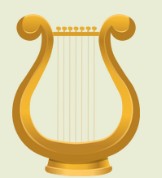Myths and
legends
What the Gods represent
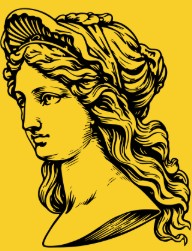
Greek mythology began as a collection of stories, legends, and beliefs passed down orally by generations of ancient Greeks. Its roots date back to pre-literate times, when people sought to explain natural phenomena, human emotions, and historical events through stories of gods, heroes, and mythological creatures.
These stories were often told by poets, such as Homer in the Iliad and Odyssey, and Hesiod in the Theogony, who wrote them down from an oral tradition. Greek mythology also served an educational, moralizing, and entertaining function, introducing the everyday values and social norms of the era. Over time, these stories were developed and modified, creating a rich and complex belief system that had a significant impact on Western culture, art, and literature.
How Greek Mythology Came to Be
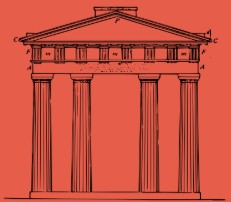
Greek mythology began as a collection of stories, legends, and beliefs passed down orally by generations of ancient Greeks. Its roots date back to pre-literate times, when people sought to explain natural phenomena, human emotions, and historical events through stories about gods, heroes, and mythological creatures. These stories were often told by poets, such as Homer in the Iliad and Odyssey, and Hesiod in the Theogony, who wrote them down from oral tradition.
Greek mythology also served an educational, moralizing, and entertaining purpose, introducing the everyday values and social norms of the era into everyday life. Over time, these stories were developed and modified, creating a rich and complex belief system that had a significant influence on Western culture, art, and literature.
Mount Olympus, the highest mountain range in Greece, is not only a geographical but also a mythological treasure. Rising to a height of 2,917 meters, the peak of Mitikas is considered the abode of the Greek gods in ancient mythology. Olympus is located on the border of the regions of Thessaly and Macedonia, not far from the coast of the Aegean Sea.
The mountain is part of the Olympus National Park, which was established in 1938 to protect its unique flora and fauna. The area is home to many endemic plant and animal species, making it a popular destination for nature lovers and hikers. Climbing Mount Olympus is challenging but offers spectacular views and the opportunity to immerse yourself in the rich history and culture of Greece.
Mount Olympus
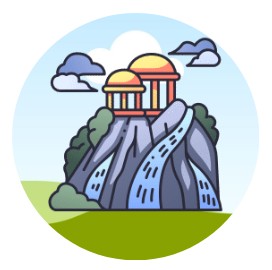
Attributes of Greek Deities
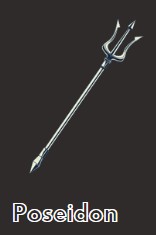
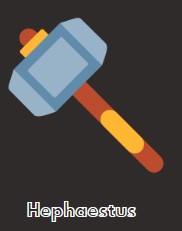
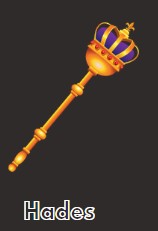


What the Gods Ate and Drank
The Greek gods, who inhabited the mythical Olympus, had unique food and drink that distinguished them from mortals. Their main food was ambrosia, a substance of divine nature that granted them immortality and eternal youth. Ambrosia was presented as an exceptionally tasty dish, although the exact form is not clearly defined in mythology.
To drink, the gods consumed nectar, which, like ambrosia, had properties that granted immortality. Nectar was often described as a sweet and aromatic drink. Thanks to these divine foods, the gods were not subject to the aging process or disease, which allowed them to reign eternally on Olympus.

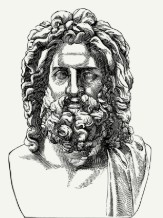
Major Greek Gods
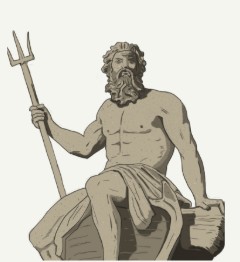
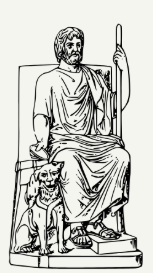
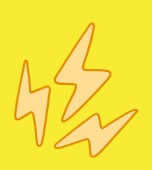
Zeus, in Greek mythology, is known as the supreme Olympian god, ruling over heaven and earth.
His attributes are numerous and symbolize his power and authority. The most famous of them is the thunderbolt, which served as his weapon and symbolized his ability to rule over nature and people. Another characteristic attribute is the eagle, which often accompanies Zeus as his sacred bird and symbol of royal majesty. Zeus’ throne, placed on Mount Olympus, also reflects his position as the ruler of the gods. He is often depicted with a laurel wreath on his head, symbolizing victory and immortality. Together, these attributes show Zeus as the all-powerful, just, and wise leader of the ancient pantheon.
ZEUS
The Story of Zeus
Zeus was the supreme god of ancient Greek mythology, known as the ruler of gods and men. He was the son of the Titans Kronos and Rhea and the brother of Poseidon, Hades, Hera, Demeter, and Hestia. According to Greek mythology, Zeus overthrew his father Kronos and freed his siblings, which led to his ascension to the throne on Mount Olympus.
Zeus was considered the god of the sky, lightning and thunder and was often depicted with a lightning bolt in his hand. He was known for his strength, justice, but also for many romances, which led to the birth of many other mythical characters and heroes.

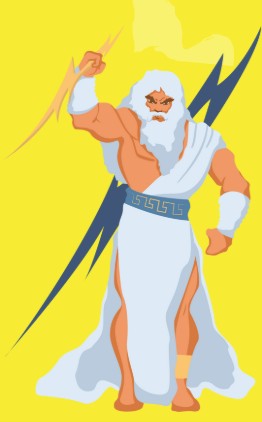
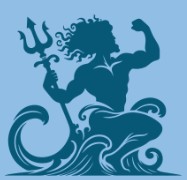
His Roman counterpart is Neptune.
Poseidon had a stormy nature, which often led to conflicts with other gods. Despite this, he was also worshiped as a protector of sailors and fishermen, and his cult was especially strong in port cities such as Athens and Corinth. In myths, he often appears in stories related to powerful storms, the creation of islands, and legendary sea creatures.
Poseidon, in Greek mythology,
is one of the twelve Olympian deities and the god of the sea, earthquakes, and horses. He is the brother of Zeus, the highest of the gods, and Hades, the ruler of the underworld. Poseidon is often depicted with a trident, which serves as his weapon and a symbol of his power over the waters.

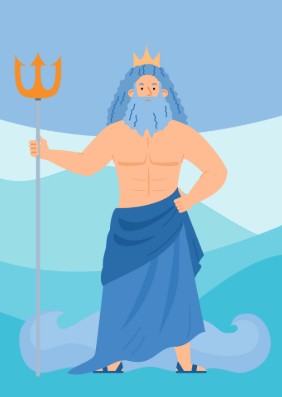
POSEIDON
The attributes of Hades, the god of the underworld in Greek mythology, play an important role in identifying his character and symbolism.
One of Hades’ most recognizable attributes is his helmet, known as the “helmet of invisibility,” which had the power to make a person invisible. Another important attribute is his scepter, symbolizing power over the underworld and the souls of the dead. Hades is often depicted with the three-headed dog Cerberus, who guards the entrance to Hades, preventing souls from escaping. In mythology, Hades was also sometimes depicted with a cornucopia, symbolizing the wealth of the earth and crops, alluding to his association with the fertility of the earth, despite spending most of his time in the land of the dead.
Hades was one of the main deities in Greek mythology.
son of the Titans Cronus and Rhea, and brother of Zeus and Poseidon. Known as the god of the underworld, Hades ruled the land of the dead, which also bore his name. Although often associated with death, Hades was not its personification; rather, he acted as the guardian of souls and ruler of the underworld. His consort was Persephone, whom he kidnapped to his kingdom. Hades was seen as a harsh but fair figure, and his kingdom was not a place of punishment, as in many later traditions. Although he was unpopular with the people, his presence was inseparable from the Greek understanding of life and death.
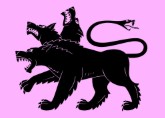
Hades
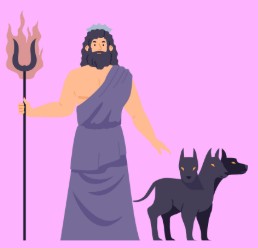
Aphrodite was the goddess of love, beauty, and fertility in Greek mythology. She was one of the most revered and famous goddesses of ancient Greece. According to legend, she was born from the foam of the sea, and her charm and attractiveness were so great that she enchanted both gods and mortals. Aphrodite was often depicted as a beautiful woman, and her symbols included doves, apples, and roses. Her role in mythology included many stories of love and passion, including her relationship with the god of war Aresh and the mortal Adonis. Aphrodite’s Roman counterpart was Venus.
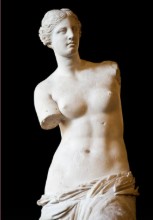

Aphrodite, the Greek goddess of love, beauty, and fertility, is often depicted with many attributes that symbolize her domains. One of the most important attributes is the seashell, which refers to her mythical birth from the sea foam. Aphrodite is also often depicted with doves, which symbolize love and peace. Another attribute is the rose, which embodies beauty and feelings. In mythology, Aphrodite had a magical belt that made anyone who wore it irresistibly attractive. Her presence in art and literature reflects the universal themes of love and beauty, which are timeless and universal.
Aphrodite
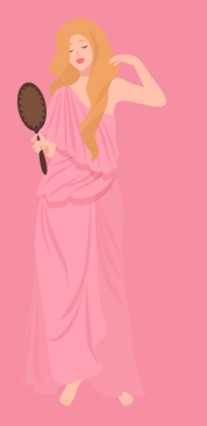
Hermes was a god in Greek mythology, known primarily as the messenger of the gods. He was the son of Zeus and Maia, one of the Pleiades. Hermes played many roles, including the protector of travelers, shepherds, traders, and thieves. He was also the god of boundaries and passages, symbolizing his ability to move freely between the world of the gods and the world of men. Hermes is often depicted with distinctive attributes, such as winged sandals, a caduceus (a staff entwined with two snakes), and a traveling hat. His figure was not only a symbol of cunning and speed, but also the patron of trade and communication.
Hermes
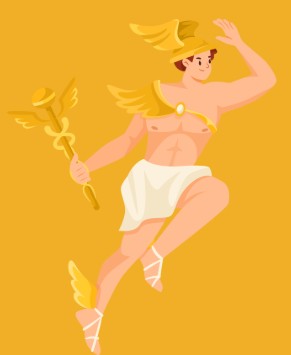
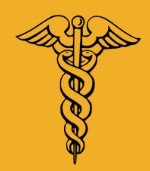
Attributes
Hermes, known in Greek mythology as the messenger of the gods, had several distinctive attributes that symbolized his functions and characteristics. First and foremost, one of Hermes’ most recognizable attributes was his winged sandals, called talaria, which allowed him to move with incredible speed. Another important attribute was the caduceus, a staff entwined with two snakes, symbolizing peace and reconciliation. Hermes also wore a petasos, a wide-brimmed hat that protected him from the sun and rain during his many journeys. As the god of travelers, merchants, and thieves, Hermes represented cunning, eloquence, and the ability to mediate between different worlds, both divine and human.
Apollo was also the patron of the Delphic Oracle, where the priestess Pythia transmitted his prophecies. His attributes include the lyre, bow and arrows, and laurel, which is a symbol of victory and art. Apollo played a key role in many myths, showing both his gentle and severe nature. In Greek culture, he was worshipped as the god of harmony and balance, and his influence extended far beyond the borders of Greece.
Apollo, in Greek mythology, is one of the most important and versatile gods. He is the son of Zeus, the king of the gods, and Leto, and the twin brother of Artemis. Apollo is the god of the sun, music, poetry, art, archery, medicine, and oracles. He is often depicted as a young, beautiful man with a lyre in his hand, symbolizing his connection with music and poetry.
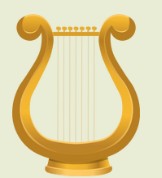
Apollo
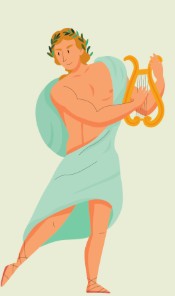
Hera is the goddess of marriage, family and motherhood in Greek mythology. She is the wife and sister of Zeus, the supreme god of Olympus. Hera is known for her jealousy and severity, especially towards Zeus’s lovers and children from other relationships. She is often depicted as a beautiful woman wearing a crown, with a peacock as her symbol. In mythological stories, Hera plays a key role, and her influence on the lives of gods and people is significant.
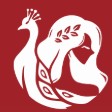
Hera
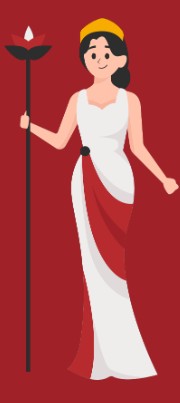
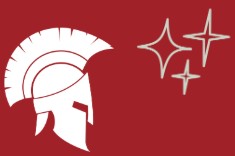
Attributes
Coat of arms attributes are features that help identify and understand the meaning and history of a given coat of arms. Each coat of arms consists of several elements, such as a shield, a helmet, a jewel, labry, and a motto. The shield is the central element of the coat of arms, which contains various symbols and colors, called “crests” and “tinctures” in heraldry. These symbols can represent values, achievements, or characteristics specific to a family, city, or institution. For example, a lion can symbolize courage, and a castle can symbolize protection. Colors also have meaning, such as gold representing nobility and silver representing purity. Understanding the attributes of a coat of arms allows for a deeper understanding of its history and traditions.
was the ancient Greek goddess of agriculture, harvests, and fertility. In Greek mythology, she was the daughter of the Titans Cronus and Rhea and the sister of the god Zeus, with whom she had a daughter, Persephone. One of the most famous myths associated with Demeter is the story of Persephone’s abduction by Hades, the god of the underworld. Demeter, devastated by the loss of her daughter, caused the earth to cease producing crops, leading to a great famine. Eventually, an agreement was reached by which Persephone spent part of the year with Hades and the rest of the time with her mother, symbolizing the changing seasons. Demeter was worshiped as the protector of farmers, and her cult played an important role in the lives of the ancient Greeks.
Attributes
Demeter, in Greek mythology, is the goddess of harvest, fertility of the earth and grain. She is one of the twelve Olympian deities and the daughter of Cronus and Rhea. Her attributes are often related to her role as the patroness of agriculture and nature. The most important of these are ears of grain, which symbolize the abundance of crops and the fertility of the earth. The cornucopia, a symbol of infinite resources, also often accompanies her in representations. Other attributes include a torch, which refers to her search for her daughter Persephone, and a sickle, used for harvesting. Demeter is a key figure in myths related to the cycle of life and death and the changing of the seasons, which further emphasizes her connection with nature and its eternal cycles.
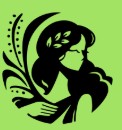
Demeter
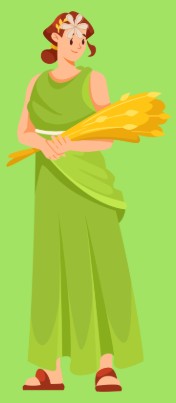
The greatest creatures in Greek mythology
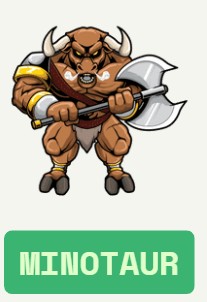
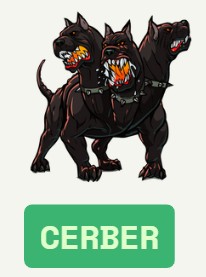
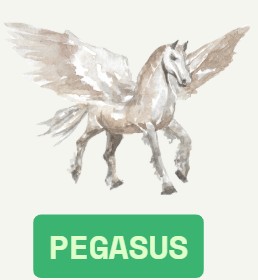
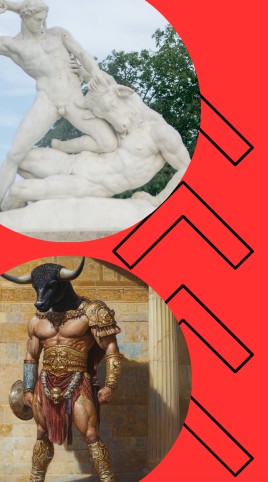
Minotaurus
The Minotaur is a mythical creature from Greek mythology that was half human, half bull. According to legend, the Minotaur inhabited the Labyrinth in Crete, built by the talented architect Daedalus on the orders of King Minos.
It was the fruit of the union of Queen Pasiphae, Minos’ wife, with a bull given to the king by Poseidon. Every year, Minos demanded a tribute from Athens in the form of seven youths and seven girls, who were to be sacrificed to the Minotaur. The monster was finally killed by the Athenian hero Theseus, who, with the help of Ariadne, Minos’ daughter, and the thread she gave him, managed to escape the Labyrinth after defeating the Minotaur. The Minotaur often symbolizes chaos, savagery, and untamed human instincts.
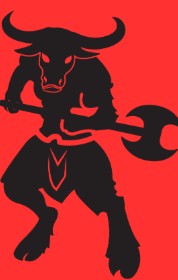
Cerber
In art and literature, Cerberus is often depicted as a huge, terrifying creature with snakes for hair and a snake tail, further emphasizing his demonic nature. One of the most famous stories about Cerberus is the myth of Heracles, who had to capture him as part of his twelve labors. Heracles managed to do so without using weapons, and after completing the task, he returned Cerberus to Hades. Cerberus symbolizes the boundary between life and death and is one of the most important guardians in Greek mythology.
Cerberus, also known as Kerberos in Greek mythology, was a powerful three-headed dog that guarded the entrance to Hades, the realm of the dead. His job was to prevent the escape of the dead and to prevent the living from entering the world of the dead. Cerberus was the son of Typhon and Echidna, and his siblings included other mythical monsters such as the Chimaera and the Lernaean Hydra.
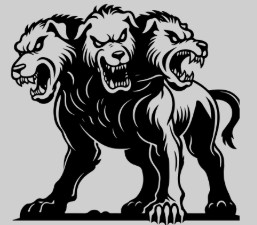
Pegasus
Pegasus has played an important role in various myths, including the story of Bellerophon, who, with the help of Athena, tamed Pegasus and rode him to defeat the Chimaera. The creature is also associated with Mount Helicon, where with a single stroke of its hoof it created the spring of Hippocrene, which was a source of inspiration for poets. Pegasus remains a symbol of freedom and creativity in art and literature to this day.
Pegasus is a mythical creature from Greek mythology, known as a winged horse. According to legend, Pegasus was born from the blood of Medusa when Perseus beheaded her. He was a symbol of inspiration and speed, often associated with the muses and poets.
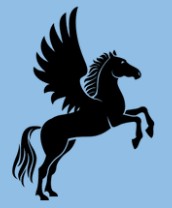
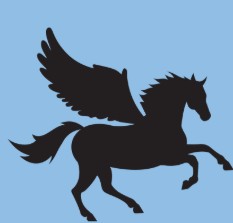
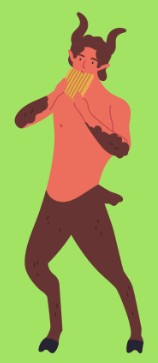
Satyr
Satyrs are figures from Greek mythology who acted as forest spirits and accompanied the god Dionysus, the patron of wine, merrymaking, and ecstasy. They were often depicted as half-human, half-goat, with characteristic horns and horse tails.

Satyrs were known for their love of music, dancing, and carefree fun, often participating in orgiastic festivals. In Greek literature and art, satyrs symbolized savagery and primal instincts, contrasting with the civilized world of humans. Their figure was also used to satirically depict human flaws and vices, making them an interesting subject for poets and artists.
Centaury
Centaurs are mythical creatures from Greek mythology that combine the characteristics of humans and horses. The upper half of a centaur is the body of a human, while the lower half is the body of a horse. They were considered wild and untamed, and their lives were often associated with chaos and conflict. The most famous centaur is Chiron, who differed from his brothers in his wisdom and nobility.
Chiron was the teacher of many famous heroes, such as Achilles and Heracles. In Greek culture, centaurs symbolized the clash of instincts and civilizations, and their stories often reflected the tension between savagery and reason. Today, centaurs appear in fantasy literature and various media, continuing to fascinate people with their uniqueness and symbolic message.
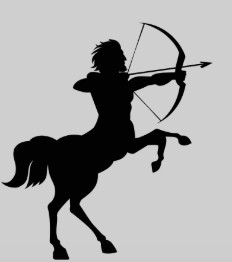
Cyclops
Cyclopes are mythical figures from Greek mythology, known primarily as giants with one eye in the middle of their forehead. There are different types of Cyclopes in Greek mythology. The most famous are the Cyclopes from Homer’s “Odyssey”, where one of them is Polyphemus, the son of Poseidon, who is known for imprisoning Odysseus and his companions in his cave.
In some stories, the Cyclopes were not only brutal giants, but also master blacksmiths, which made them indispensable allies to the Olympian gods.
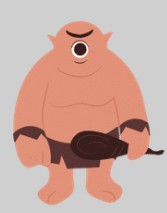
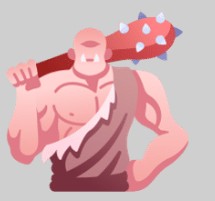
The myth of the creation of the world
The creation myth is a fascinating story that varies depending on culture and civilization. In Greek mythology, the world begins with chaos, from which the first gods emerge, such as Uranus and Gaia. Gaia, the mother of the earth, gives birth to Uranus, the sky, and their offspring give rise to subsequent generations of gods. In Norse mythology, the world is created from the body of the giant Ymir, whom the gods Odin, Vili, and Ve kill, creating from his body the earth, from his blood the sea, from his bones the mountains, and from his skull the vault of heaven.
In Hindu tradition, the world is created and destroyed cyclically by Brahma, Vishnu, and Shiva. These myths reflect attempts to understand the mystery of existence and provide insight into the values and beliefs of ancient societies. Each of these stories, full of symbolism and mythological figures, offers a unique perspective on the origin of everything around us.

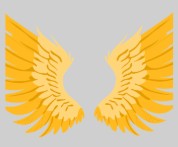
The Myth of Daedalus and Icarus
One of the most famous Greek myths is the story of Daedalus and Icarus. Daedalus was a talented craftsman and inventor who worked at the court of King Minos in Crete. After building a labyrinth for the Minotaur, Daedalus fell out of favor with the king and was imprisoned on an island with his son Icarus.
To escape, Daedalus constructed wings of feathers and wax, warning his son not to fly too close to the sun, lest the wax melt. Icarus, elated by his newfound freedom, ignored his father’s warnings and flew too high. The sun melted the wax, and Icarus fell into the sea, where he died. This tale is often interpreted as a warning against pride and disobeying sound advice.
Thank you for your attention
The project is funded by the European Union. The opinions and views expressed are solely those of the authors and do not necessarily reflect the position of the European Union or the granting entity. The European Union and the granting entity are not responsible for them
Autors: Czarek, Zuzia, Szymon, Mikołaj, Kuba
